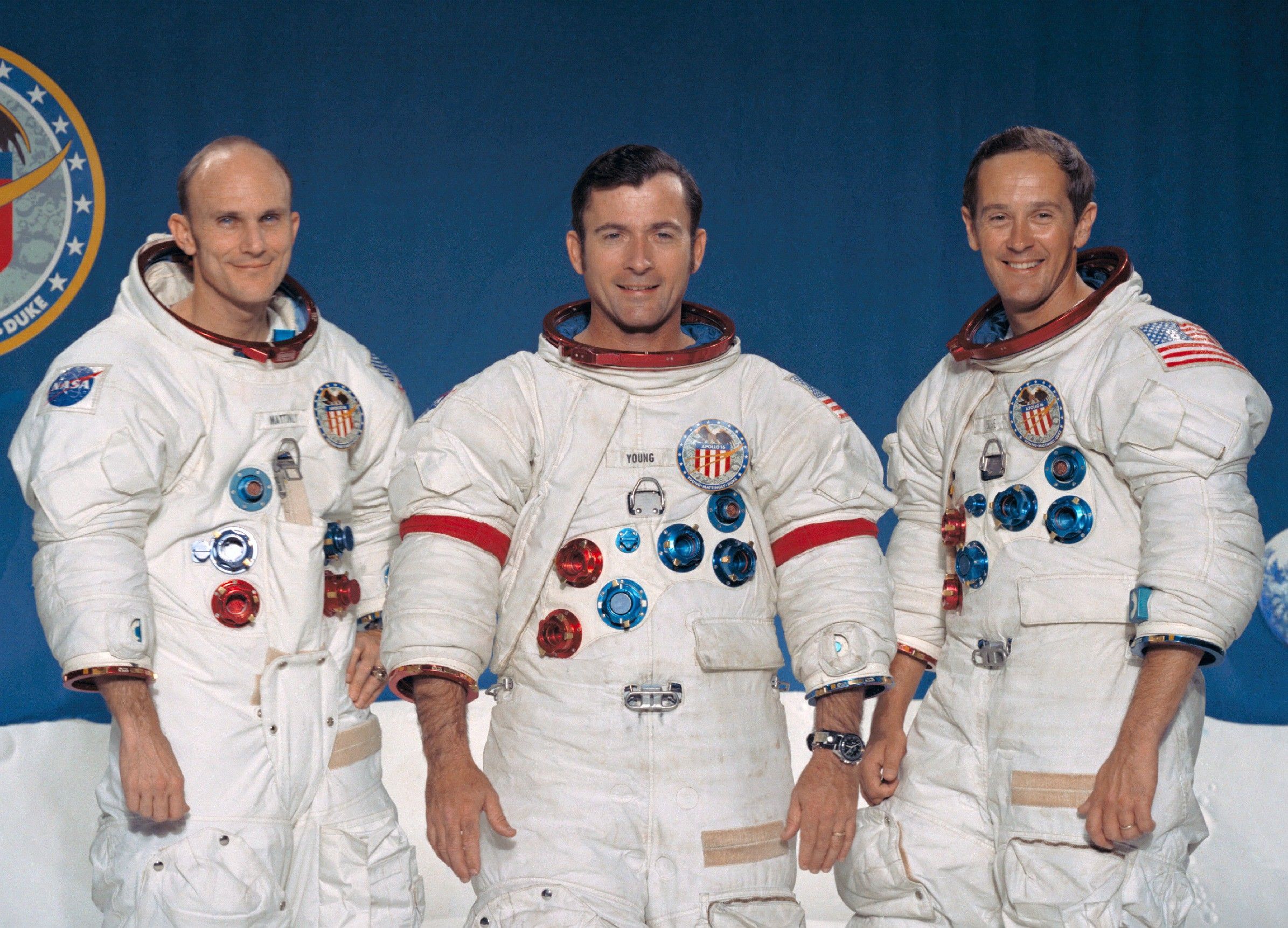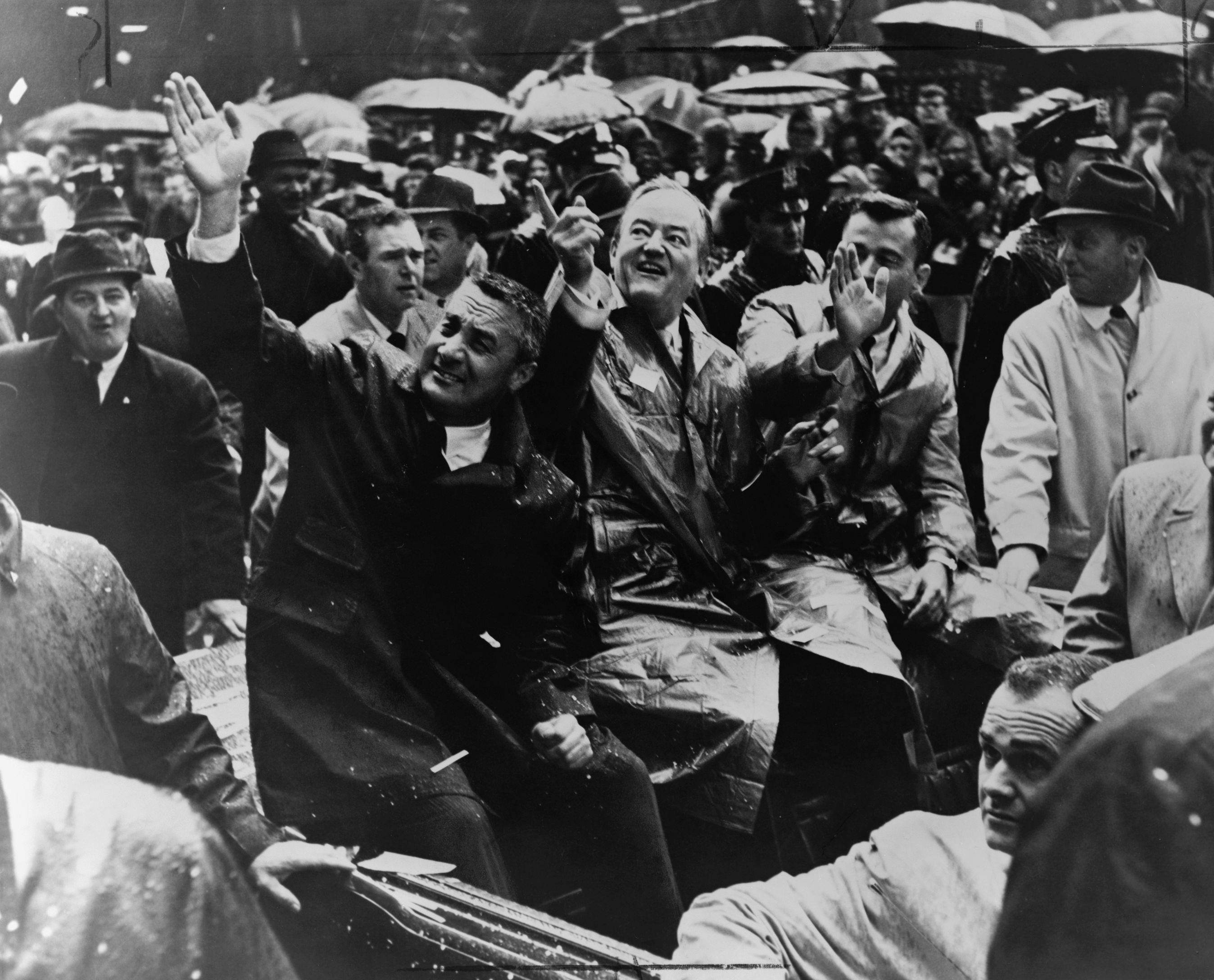John Young, the Astronaut

During the launch of the Apollo 16 mission, Charles Duke (pictured above on the right) had a heartbeat of 144. It’s an absolutely natural response to the sensation of 7.5 million pounds of thrust lifting 95 tons into orbit. John Young was commander of the mission. His heart rate was 70. When asked about this he simply replied in an even voice:
“Yeah, well mine was too old to go any faster.”
I don’t believe in putting people on pedestals and I’m not a fan of worshipping individuals. But John Watts Young is a person worthy of admiration.
During his 42 years at NASA he can be attributed to many of the Firsts in space exploration. It’s a bit of a mystery to me why he’s not that famous and why many people don’t even know about him. I myself learned of his name a few months ago, while stumbling upon a random article. I was immediately fascinated with his long career, his approach to challenges and his attitude to life in general.
John W. Young, now retired, had the longest career as an astronaut. He’s the only person to have been commander of four classes of spacecraft. He was part of the first two-man space mission. He’s the first person to have orbited the Moon alone. One of three people to have flown to the Moon twice. The list goes on and on. Oh, he’s also one of the 12 people in human history to ever walk on the Moon.

Young’s achievements in space and contributions to science are unquestionable and deserve nothing short of full-hearted respect. There are however many more brave astronauts, who have risked their lives and even lost them in the name of human exploration. So why am I particularly fascinated with John Young? Because during the more than 15,000 hours of flight time, the insanely difficult NASA training, the dangerous missions doing things no man has ever done, he was always having fun. Not the kind of loud, obvious fun people have, but a quiet, humble, deadpan fun.
NASA’s first two-man space mission was called Gemini 3. It was also Young’s first assignment to a mission in space. The objective of the mission was mainly to test the new spacecraft, but also to assess a brand new space food — rehydratable hot dogs and chicken legs.
In those years, food in space was quite a serious matter. The food itself wasn’t such a big necessity — the space trips during the time took only several hours. Nevertheless, it was important to test how a human being would react to eating food in zero gravity to lay the foundations for future longer distance travels. In order to bring food in space, however, it would either have to be packed in a tube or immersed in gelatin to prevent it from breaking up and flying all over the place. Apparently, an odorless jelly-chicken didn’t sound all that appealing to Young, so he decided to bring his own treat on board.
Halfway into the mission, the following conversation took place between him and Commander Gus Grissom:
Grissom: What is it? Young: Corn beef sandwich.
Grissom: Where did that come from?
Young: I brought it with me. Let’s see how it tastes. Smells, doesn’t it?
Grissom: Yes, it’s breaking up. I’m going to stick it in my pocket.
Young: Is it?
Young: It was a thought, anyway.
Grissom: Yep.
Young: Not a very good one.
Grissom: Pretty good, though, if it would just hold together.
Young: Want some chicken leg?
Grissom: No, you can handle that.
Needless to say, both NASA and Congress were furious. Young had smuggled a corn beef sandwich in his space suit, bought a few days prior by fellow astronaut and prankster Wally Schirra. It was a huge scandal. Congress had invested millions of dollars into the space food experiment and to them it seemed that the astronauts had ignored the hi-tech food in favor of a simple Earth-sandwich. NASA was more practically worried that flying bread crumbs might damage the vessel or even get inhaled by astronauts — a genuine concern, which has since resulted in strict regulations.
Still, it was pretty funny. Although the two enormous authorities were outraged, the consequences for Young seem minor. OK, he was officially reprimanded, which sounds like he was placed in a big hall where a couple of guys in suits were waving a finger at him and making him promise not to do it again. Then he promptly continued to have a lifelong career of successful space achievements. I like to think that he was just too good at what he did to be led go so easily. I’m sure the astronaut queue was long enough to safely assume there wasn’t a shortage of candidates for his position.
Young was always modest, avoiding attention even when he was praised for his success starting all the way in high school when local magazines spotted his exceptional academic records. He later enlisted in the Navy with an engineering degree, heading straight for the pilot role. Not just any pilot role, but a test pilot — one of the most dangerous jobs he could do — probing newly developed machinery and the limits of the human body.
Later, he became part of the second batch of test pilots, enlisted in NASA to take part in the great space race. He was part of the elite, undergoing endless evaluations, exams, trainings and medical tests to make sure he was absolutely fit to go into space. The astronaut training consisted of 16 hours of physical exercises a day. When asked about it, Young commented:
It was good training, it was a lot of fun.
Young is remembered by his fellow astronauts as the most laid-back trainee, earning the nickname (one of many) “the uncomplaining dark horse”. He made hard work seem effortless, always remaining calm and collected in the face of the constant discomforts the trainees were placed in. However, not even the tough NASA training would prepare him for what followed after the Gemini 3 mission.

The two returning astronauts were heroes, traveling around the country, speaking in front of thousands of fans — a most uncomfortable situation for John Young. Thankfully, it was soon over and he could move on to being an integral part of developing the Apollo systems. As a pilot, who had flown in space, he was used by NASA engineers to discover potential flaws in the next generation of space craft.
Young himself later commanded two Apollo missions — the first one being Apollo 10, a “dress rehearsal” laying the path for humanity’s first step on the Moon. The second one was Apollo 16, where Young too could take a stroll on the Moon’s surface. He also used the lunar rover to skid, setting a record for fastest driving on the Moon.
There was also another peculiar incident on the same trip. Ever since the 1960s NASA has put a lot of effort into teaching astronauts what to say in space. More precisely what not to say. Communication between Houston and astronauts during a mission was broadcasted live all over the world, so it was, and still is, unacceptable for them to swear or behave in an otherwise indecent manner. NASA made sure the public image of astronauts reflected the core American values married men of high morals and religious beliefs. It’s easy to imagine the Houston mission control room full of people face-palming themselves when the following conversation took place on the Moon between John Young and Charles Duke:
Young: I have the farts, again. I got them again, Charlie. I don’t know what the hell gives them to me. Certainly not — I think it’s acid stomach. I really do.
Duke: It probably is.
Young: (Laughing) I mean, I haven’t eaten this much citrus fruit in 20 years! And I’ll tell you one thing, in another 12 fucking days, I ain’t never eating any more. And if they offer to sup(plement) me potassium with my breakfast, I’m going to throw up! (Pause) I like an occasional orange. Really do. (Laughs) But I’ll be durned if I’m going to be buried in oranges.
England: Okay, John. We have a hot mike.
Young: How long have we had that?
It’s a silly thing— farting on the Moon. But such incidents gave a more familiar face to space heroes. It made them more humane and relatable, possibly making it more likely for children and young adults to opt for pursuing a career in astronomy. It’s what astronauts like Chris Hadfield are striving for today by being active on social media and making Q&A sessions in space.
After the end of the Apollo program, when all the spacecraft recently used for space travel were displayed as museum pieces, most astronauts moved on to other roles. Young, however, stayed with the space program and was made chief astronaut, leading the efforts to create the first partially reusable space vehicle. He wasn’t just part of developing the spaceship either — he would sit behind the wheel of the maiden flight for the Space Shuttle. At 51.
Being an astronaut is undoubtedly one of the toughest jobs on Earth — both physically and mentally. It’s one of the professions little kids immediately think of when asked what they want to be when they grow up. Astronauts are the champions of humanity, driven by the ultimate goal of scientific progress and exploration. John Young was a hero to many and yet remains humble to this day, dismissing every attempt at praise and admiration. I do admire Young. Not for the public highly moral image NASA created for him, but for his down-to-earth thinking, his calmness in the face of danger and his unperturbed approach to difficulty.
Lastly, a short conversation from an interview with John Young:
